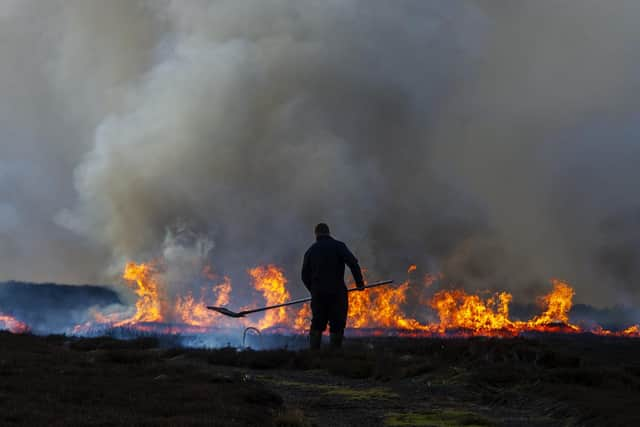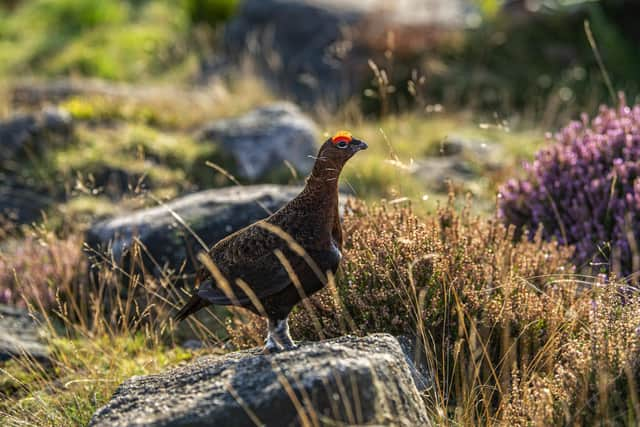Pouring water on flames of moor management argument as Yorkshire prepares for burning season
For some unfamiliar with the practice it can be quite an alarming sight, for others it is a way of life, a mark on the country calendar and the continuation of a years old method of moorland management.
Tomorrow sees the start of the permitted period of controlled heather burning where gamekeepers, farmers and land-owners burn off old heather to make way for new growth to aid wildlife and habitats and to also reduce the risks of wildfire.
Advertisement
Hide AdAdvertisement
Hide AdThe practice, carried out across areas such as the North York Moors National Park and The Yorkshire Dales National Park, has been dubbed “a combination of an art form and science”.


It has moved on from the days of a broomstick and a paraffin soaked rag. Gamekeepers are now highly trained, qualified and working with the approval of the fire service.
Nowadays, they use a blowtorch to start small pockets of fires which can be easily quashed with leaf blowers, water packs and fire breaks that have already been cut into the heather.
From above it looks like a mosaic patchwork on the landscape but it has been pre-prepared in a controlled burning plan.
Advertisement
Hide AdAdvertisement
Hide AdDarren Chadwick is chairman of The Moorland Association. He said: “It is a combination of an art form and science.


"From a distance it can look quite dramatic with flames leaping up in the air and smoke billowing out but if you go out and view, and people do come and watch, and see what goes on, it is perfectly under control.”
However, heather burning – no matter how long it has been going on for, or despite several recent studies that have found it to be a vital tool in moorland and wild fire management – is controversial and divisive.
Opponents cite fears over damage to peat stores, the release of carbon dioxide and that the moors are burned and grouse bred to make way for shooting.
Advertisement
Hide AdAdvertisement
Hide AdMr Chadwick says heather burning only takes place when conditions are right and so if tomorrow, it is not wet underfoot with a gentle breeze then it won’t happen.
He said: “The issue we are trying to change is that there are a lot of negative articles and that it is burning and releasing carbon.
"There are some really good positives from it. It protects young shoots and encourages new growth and creates that mosaic of vegetation.
"In the south gorse and bracken is burned but there is no attention on that. Even if grouse shooting did not exist you would still have to manage the vegetation or alternatively wait for a big wild fire that will burn for several days and release all the carbon that burning was meant to protect.”
Advertisement
Hide AdAdvertisement
Hide AdThere is also the argument that if grouse moors were not managed, wild birds were not able to breed and lead to a surplus for shoots, the local economy would suffer.
Lord Bolton, Tom Orde-Powlett, of the Bolton Estate says there is an online effort to create division over heather burning.
"The majority don’t buy it. Controlled burning is part of grouse moor management, funded by people who come and shoot grouse. Members of the public come and walk over Bolton, enjoy it, don’t pay a penny to do that whereas some of the people that shoot are very rich and pay for the maintenance of it.
"Pubs, hotels, BnBs - their whole business model is underpinned by grouse shooting, that keeps staff on all year round. There is also a social aspect to it in terms of well-being.”
